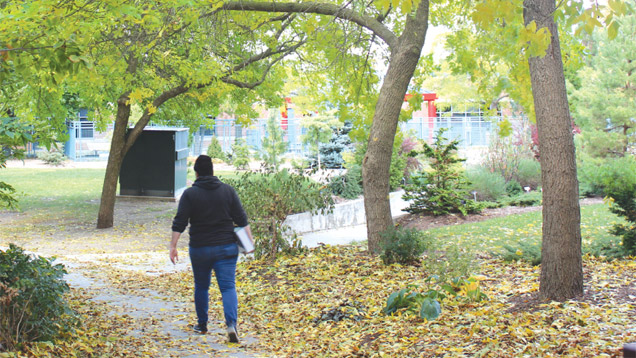Restoring the 'Forest City'
 CREDIT: JESSICA THOMPSON
CREDIT: JESSICA THOMPSONReForest London's goal is to repopulate nature throughout the city and restore the environment.
When a city expands, urbanization can affect the natural environment. As London continues to grow, it could lose its status as the Forest City if the environment is not preserved.
ReForest London is one organization which is working hard to repopulate nature throughout the city and encourages Londoners to participate.
ReForest London has done more than restore the environment. The organization has created the opportunity for the community to work together. Last summer, St. Peter’s Cathedral Basilica along with other Christian, Jewish and Islamic organizations planned to come together at McCormick Park to plant trees.
Michael Wojtak of the Parish Pastoral Council for St Peter’s Cathedral Basilica says the event was an opportunity for everyone to get to know one another better.
“It was intended to be more of a social event where there would be sports, games and sharing of food,” Wojtak said. “It was [every organization’s] responsibility to do this and get to know each other better.”
“This event was open to all who were willing to participate. We work with [Christian, Jewish and Islamic] organizations on a committee level with a focus on the downtown sector.”
Wojtak says this was an opportunity to get to know more people from different organizations.
“This event was different as we were working with organizations that were not specifically from the downtown but rather came from all around the city that we would not normally work with.”
The planting of the trees is apart of London’s Million Tree Challenge, which started in January 2011 to plant one million trees within 10 years.
According MillionTrees.ca, the main website for the challenge, having more trees provides many benefits for the city including:
• Improved air quality
• Reduced heating and cooling costs
• More shaded areas
• Increased home values
• Improved appearance for shopping and downtown areas
• Greener recreation areas.
ReForest London operates under city laws and conservation laws, which results in the organization planning out specific times throughout the year for when the trees can be planted in order to ensure they survive and grow.
Losing a day of planting affects the progress the city can make when it comes to increasing vegetation.
“It is unfortunate that the weather did not co-operate with us [on June 14], but I am confident we can have a great event in [the future],” said Julie Ryan, director of programs for ReForest London.
Depending on the weather, some events need to be cancelled as it could affect the survivability of the trees that are being planted.
“It has to be prepared for appropriate environmental timing,” Wojtak said. “It makes it tricky for all the organizations and families to co-ordinate again.”
In addition to hoping that the day will allow for trees to be planted, ReForest London needs to plan the amount of trees that they will be planting as well as the amount of people registered for the particular outing.
“It is important for ReForest London to know the amount of people coming out to the event,” Wojtak said. “At one event in the past, less numbers showed up and those trees had to be taken away because they could not be planted within the given time.”
“The organization also has to purchase the trees and groups registered have the opportunity to donate $200 to help with the transaction. It is not mandatory but it does help the cause”
There are more stipulations regarding the species type.
“The trees being planted have to be from Southwestern Ontario – or apart of the Carolinian forest – so maple trees and tulip tress are examples of the tress that would be planted,” Wojtak said. “However, with these trees being planted on city land, they have to be planted at specific growing periods.”
Getting involved with ReForest London is a straightforward process. Individuals or groups can register with ReForest London and submit the amount of trees they are hoping to plant.
“The organization arranges the event and once you register, they try to fit you into a specific date. They encourage that people sign up in groups such as a sport team for example. April is a big rush for the organization. Plantings can happen every other week. Some specific trees have been decimated but this is an attempt to repopulate,” he said. “Students can form their own group – or work through organizations such as St. Peter’s – and participate in the plantings that would be taking place in fall.”
On MillionTrees.ca, you can suggest new locations for tree plantings as well as raise money for future plantings. The site also offers information on how to properly plant and care for the trees. So take your green thumb to the next level and help London keep the forest in Forest City.














